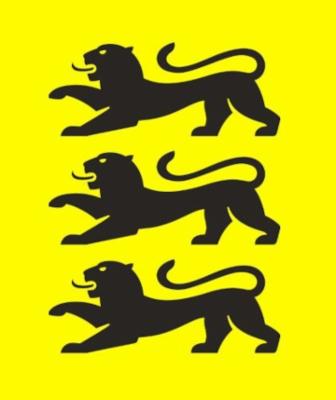What tax relief is available for "calamity uses" and how can I claim it?
Requirements for tax relief (tariff reductions) for timber utilization due to force majeure (calamity utilization)
The use of timber as a result of force majeure (calamity use) is use caused by ice, snow, wind breakage or beetle damage or another natural event that is equivalent in its consequences to the aforementioned events (Section 34b (1) no. 2 EStG). Calamity use does not include damage that regularly occurs in forestry, such as individual dry trees, damage caused by lightning, individual windthrows or beetle-stricken trees, provided they are within the scope of regular losses (R 34b.2 para. 4 EStR).
The reduced tax rates of § 34b EStG are applicable to income from calamity use under the following conditions:
Prerequisite for half of the average tax rate:
- The damage as a result of force majeure must be reported to the competent tax authority (in Baden-Württemberg the Oberfinanzdirektion Baden-Württemberg based in Karlsruhe) immediately after the damage is discovered and must be proven in terms of quantity after processing (Section 34b para. 4 no. 2 EStG).
- The timber sold or removed must be reported separately for ordinary and extraordinary timber use in the financial year (Section 34b (4) no. 1 EStG). If such an expert opinion is available, the cutting rate recognized therein is to be used as the taxable utilization rate.
Additional requirement for a quarter of the average tax rate:
- A utilization rate must be calculated in an operating plant or operating expert opinion and determined by the tax authorities (Section 68 EStDV). For reasons of simplification, a flat rate of 5 solid cubic meters of harvested timber per hectare applies to businesses with up to and including 50 hectares of forestry land, unless an officially recognized business report or business report is already available for other reasons. (R 34b.6 para. 3 EStR).
- The extraordinary use of wood without taking normal use into account must exceed the utilization rate (§ 34b para. 3 no. 2 EStG), whereby the one-quarter tax rate only applies to the excess portion.
How can I claim tax relief for calamity use?
I. Calamity benefits (except red rot)
- Notification of damage using form ESt 34b notification (advance notification)
Calamity benefits must be reported to Oberfinanzdirektion Baden-Württemberg immediately after the damage is discovered. The ESt 34b notification (advance notification) form must be used for the notification.
The estimated amount of damage must be stated for each individual forest location (district or division). The notification of damage must be submitted in good time before the damaged timber is processed so that the damage can be checked by the tax administration's forestry expert. In urgent cases (e.g. bark beetle infestation to be processed immediately), notification by telephone is also possible. The written notification must be submitted immediately. Damaged wood that has already been processed before the notification cannot be recognized as calamity use. If it becomes apparent during the processing of the damage that the estimated quantities of damage are significantly exceeded, the notification must be corrected immediately by means of a subsequent notification. - Proof of damage with form ESt 34b proof (final notification ) Calamity use must be proven immediately after the actual amount of damage is known at Oberfinanzdirektion Karlsruhe using the form "ESt 34b proof (final notification)".
II. calamity follow-up cuts
If, after a calamity, small remnants of stands (e.g. individual rows of trees along paths/crops) remain standing that have to be felled for forestry reasons (so-called calamity succession felling), these are only taken into account as timber utilization due to force majeure if they cannot be included in the planned utilization of the next few years, but in particular if stands that are not ready for felling have to be felled (ruling of the Federal Fiscal Court of 11.04.1961 Federal Tax Gazette 1961 III page 276 ff).
The notification of the subsequent calamity felling must be submitted before the processing and agreed with the responsible forestry expert at Oberfinanzdirektion. Whether the felling is necessary for forestry purposes can only be assessed in each case on a standing stand. Logging may only be started after a local inspection by the forestry expert at Oberfinanzdirektion. Stand remains that have already been felled and can no longer be inspected due to late notification cannot be recognized as timber use due to force majeure. Proof of subsequent calamity felling must be provided immediately after the actual amount of damage is known, as in the case of calamity utilization.
III. red rot damage
Red rot can only be recognized as timber use within the meaning of § 34b para. 1 no. 2 EStG (calamity use) if the following provisions apply:
- If, at a felling site, the number of spruce trunks affected by red rot in a stand does not exceed 50 percent of the total number of spruce trunks felled, this proportion of red rot is to be regarded as regular and therefore not as calamity.
- If, at a felling site, the number of spruce logs affected by red rot during thinning or clear-cutting of the stand is more than 50 % of the total number of spruce logs felled, that part of the total quantity of spruce timber felled which corresponds to the percentage of red rotten logs exceeding 50 % is to be recognized as calamity.
- A spruce trunk is red rotten if more than 15 percent of its diameter at the base of the trunk is damaged by fungal infestation.
- In the case of mixed stands, the percentage rate and the proportionate amount of wood within the meaning of numbers 1 to 3 shall only relate to the proportion of spruce wood.
Proof must be provided immediately after the actual amount of damage is known
